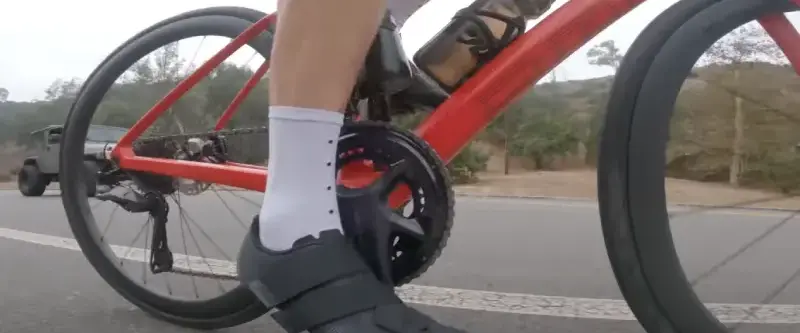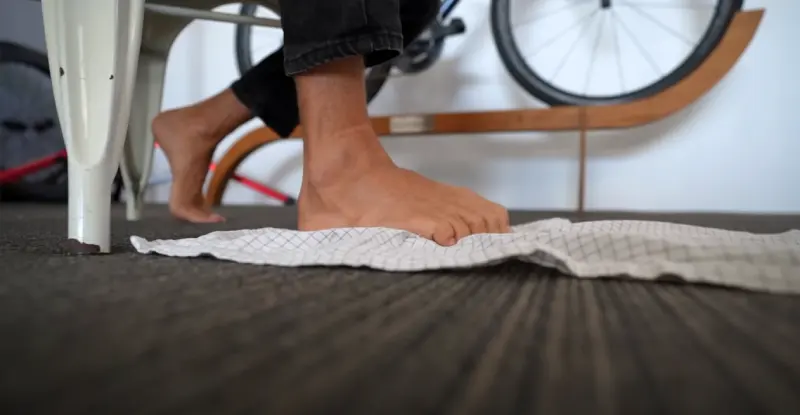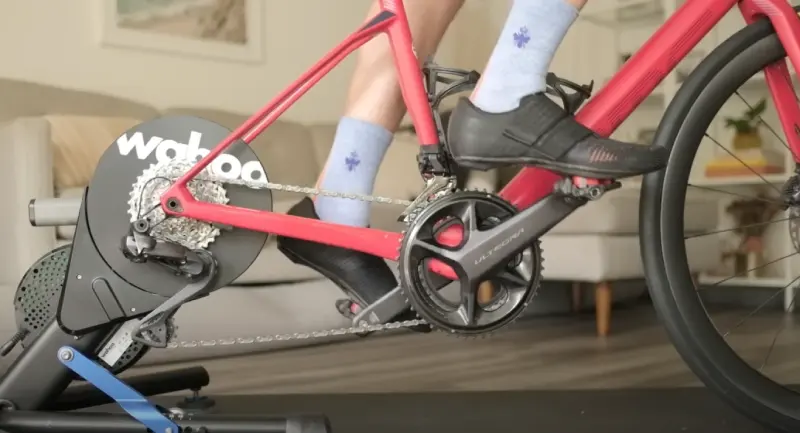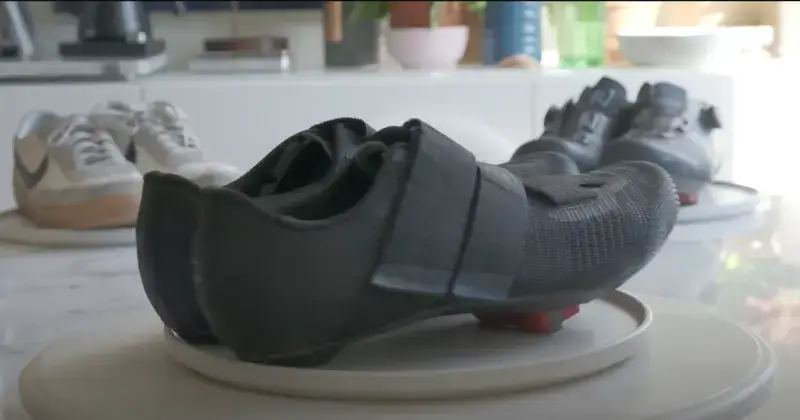A broken toe can disrupt a cyclist’s journey. Toe injuries affect your ability to properly balance, take off, and land. They hide silently in your cycling shoes, disrupting every climb with pain.
Yes, a broken toe can cause leg pain while cycling. Because the body’s musculoskeletal system is interconnected, discomfort in one area can affect related regions. Most broken toes heal within 4 to 6 weeks. Bicyclists with leg pain in the toe should see a physician.
In this blog post, we will explore 7 Mechanisms and 10 Effects of Broken Toe Leg Pain for Cyclists. We will also provide 4 Alternative Exercises and 4 precautions for broken-toe cyclists.
Can A Broken Toe Cause Leg Pain While Cycling: 6 Mechanisms
Cycling isn’t just about legs and stamina; it’s a coordinated effort of body parts, each with a critical role. The toes, often overlooked, play a significant part in cycling performance. Let’s delve into their biomechanical role, the impact of a broken toe, and how it affects cycling mechanics.
Biomechanical Role of Toes in Cycling
Toes might seem minor compared to the rest of the body, but they are pivotal in cycling for several reasons:
- Balance and Stability: When pedaling, your toes help keep you balanced on the bike. They make tiny adjustments as you ride, helping you stay upright and in control.
- Power Transfer: As you push down on the pedals, your toes contribute to the force applied. This helps transfer power from your legs to the bike, making your pedaling more efficient.
How a Broken Toe Affects Cycling Mechanics?
When you have a broken toe, the seemingly straightforward act of cycling becomes a challenge:
- Compensatory Injuries: To avoid pain in the injured toe, you might start overusing other parts of the foot or leg. It can cause muscle imbalances and strains in areas not used for such pressure.
- Reduced Power Output: With a broken toe, power output on the pedals decreases. This means you can’t generate as much power, which can make cycling more tiring and less effective.
How To Deal With Broken Toes?
A broken toe can result from direct trauma, repetitive stress, or even an awkward fall. Here’s what it typically involves:
- Altered Pedal Technique: You might change how you pedal because of pain and discomfort. This can lead to inefficient cycling, as you cannot apply force optimally.
- Types of breaks: Toes can suffer from simple fractures, where there’s a single crack in the bone, to more complex ones involving multiple fractures or joint damage.
Leg Pain From A Broken Toe While Cycling: 3 Factors
In this informative piece, discover the fascinating link between a broken toe and the discomfort encountered while cycling. Uncover three major factors explaining this correlation, offering valuable perspectives to enrich your comprehension.
Abnormal Foot Structures or Deformities
- A cyclist with abnormal foot structures or deformities may experience leg pain due to a broken toe.
- The stress on the toes during pedaling can exacerbate existing foot issues, leading to discomfort and leg pain.
Health Conditions like Osteoporosis
- Osteoporosis, characterized by weakened bones, can make cyclists more susceptible to fractures, including toe fractures.
- Cycling with a broken toe can worsen leg pain, as the compromised bone may not be able to withstand the repetitive stress of pedaling.
- It’s essential for cyclists with osteoporosis to take precautions to prevent injuries and ensure proper bone health.
Shoe Size: Too Large or Too Small
- Fitting cycling shoes can contribute to the injury of a broken toe and subsequent leg pain.
- Too tight shoes can compress the toes, leading to leg pain and increasing the risk of fractures during cycling.
- On the flip side, overly loose shoes can cause foot sliding, instability, increased leg pain, and the risk of injuries.
Broken Toe on Your Cycling Journey: 10 Effects
Cycling can exhilarate, offering fitness benefits and the joy of outdoor exploration. Even a minor injury like a broken toe can throw a wrench into your cycling plans. Let’s delve into how a broken toe directly affects your cycling experience, focusing on your pedal stroke and overall cycling efficiency.
Direct Consequences of a Broken Toe
When you think about cycling, a toe might seem too small to cause much trouble. But, when it’s injured, its importance becomes painfully clear. Here are the direct effects of cycling with a broken toe:
Altered Pedal Stroke
- Pain Avoidance: Naturally, you’ll want to avoid pain. This leads to changing how you pedal, often in less efficient ways.
- Uneven Pressure: Instead of a smooth, powerful stroke, you might favor the uninjured foot, leading to an imbalanced ride.
Decreased Cycling Efficiency
- Reduced Power: Your ability to push down hard is compromised, meaning you can generate less speed or power.
- Slower Recovery: Every pedal stroke might be slower as you cautiously try to reduce discomfort, slowing down your overall pace.
Immediate Impact on Cycling
- Increased Fatigue: With your body compensating for the injury, muscles that aren’t used to being overworked tire out more quickly.
- Disrupted Rhythm: The smooth rhythm you’re used to while cycling gets interrupted, making long rides feel even longer and more challenging.
Indirect Outcomes of a Broken Toe
Cycling with a broken toe might seem manageable initially, but the body’s interconnectedness means this minor injury can lead to more significant, indirect outcomes. When you compensate for toe pain by altering your natural movement, it can trigger a chain reaction, resulting in leg pain and other compensatory injuries. Let’s delve into how this process unfolds and the broader implications for cyclists.
The Chain Reaction of Compensating for a Toe Injury
Adjusting your cycling technique or body mechanics to avoid toe pain doesn’t just affect the injured area. The effects of these changes can be profound on overall physical health, especially during an activity as repetitive and physically demanding as cycling.
Development of Secondary Issues
- Leg Pain and Muscle Fatigue: As specific muscles work harder to compensate for the injury, they can become overused, leading to muscle fatigue, stiffness, and pain, particularly in the calves and thighs.
- Joint Stress and Pain: Alternate pedaling and weight distribution can also affect the knees and hips, potentially resulting in joint pain or exacerbating pre-existing conditions.
Long-term Consequences
- Muscle Imbalances: Prolonged compensation can cause some muscles to weaken from under-use. In contrast, others become overly tight, leading to imbalances that can affect posture and movement even off the bike.
- Extended Recovery Periods: The initial toe injury might heal, but the secondary injuries and muscle imbalances can prolong the overall recovery time, delaying a return to optimal cycling performance.
Stay Fit with a Broken Toe: Alternative Exercises & Precautions
Suffering from a broken toe doesn’t mean you have to put your fitness journey on hold. While cycling might be temporarily off the table, plenty of alternative exercises can help you stay active without putting pressure on your injury. Taking the proper precautions can prevent further damage and speed up your recovery. Let’s explore some safe ways to keep moving and guidelines to protect your broken toe.
Alternative Exercises to Keep Weight Off the Toes
Maintaining your fitness level is possible, even with a toe injury. Choosing activities that minimize foot stress is the key. Here are some recommended exercises:
- Swimming and Water Aerobics: Water’s buoyancy reduces strain on your toes while allowing for a full-body workout.
- Cycling on a Stationary Bike: With careful positioning, stationary biking can be low-impact. Use the middle or heel of your foot on the pedals to avoid toe pressure.
- Upper Body Workouts: Focus on building upper body strength with exercises like seated weight lifting, which keeps pressure off your feet.
- Core Strengthening Exercises: Activities like planks (changing to rest on the forearms rather than the hands to avoid toe pressure) or seated yoga poses can enhance core strength without affecting your toe.
Precautions to Prevent Worsening the Injury
The toe pain and injuries can be managed with remedies like shoe inserts, padding, taping, medications, injections, and sometimes, surgery. If you suspect a broken toe, seeking prompt care from a podiatrist is vital. While maintaining an active lifestyle is important, taking precautions to support the proper healing of the injured toe is equally critical. Here are some preventive steps:
- Wear Proper Footwear: Choose shoes with stiff soles to protect your toes from bending. Special orthopedic shoes are sometimes recommended.
- Use Supportive Devices: If your break is severe, a walking boot or crutches can help keep weight off your foot.
- Modify Your Activities: Adjust your exercise routine to avoid high-impact movements. If you experience pain while doing an activity, stop it.
- Follow Your Doctor’s Advice: Adhere strictly to any guidelines or treatment plans your healthcare provider prescribes.
Conclusion
We’ve navigated the landscape of how a mere broken toe could disrupt your cycling adventure, potentially causing leg discomfort and other complications. It serves as a poignant reminder of the significance of addressing minor injuries before hopping back on the saddle.
While the temptation to push through may be attractive–after all, everyone relishes a resilient cyclist tale–it’s crucial to remember that seeking professional medical guidance is always a wise choice when handling these bumps and bruises. Prioritize the safety of your toes and enjoy the ride.
FAQs
What’s The Common Cause of Toe Fractures in Cycling?
Falling off the bike, hitting your toe against a hard object, or even the constant pressure from tight cycling shoes can lead to fractures.
How Does a Broken Toe Affect Nerves?
Improperly healed broken toes raise the likelihood of osteoarthritis or lasting nerve damage. Seeking treatment from a foot and toe care specialist is crucial to ensure your broken toe mends correctly, allowing you to return to your usual activities free from concerns about complications.
What Happens If You Don’t Fix Broken Toes?
Untreated toe fractures can progress to osteoarthritis, resulting in pain, stiffness, swelling, and mobility challenges that profoundly affect daily activities. The formation of a bone spur on the affected toe commonly accompanies such scenarios.





